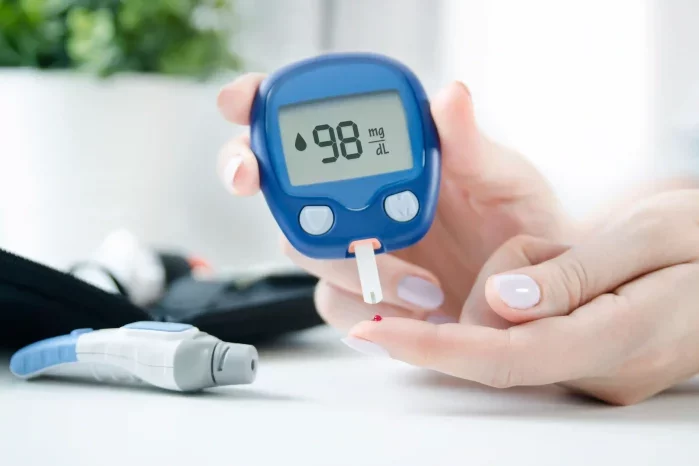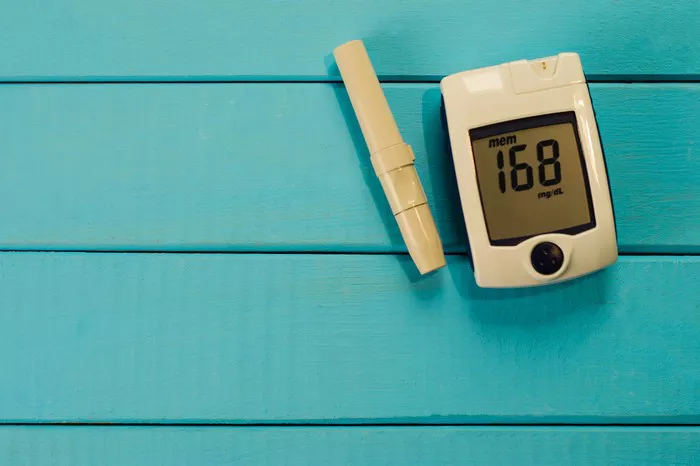Insulin resistance is a condition where the body’s cells become less responsive to the hormone insulin, which is essential for regulating blood glucose levels. This condition can lead to a variety of health issues, including type 2 diabetes, cardiovascular disease, and metabolic syndrome. Recognizing the signs of insulin resistance early can help in managing and preventing these serious health problems. This article will delve into the various signs of insulin resistance, their implications, and strategies for managing the condition.
What is Insulin Resistance?
Before discussing the signs, it is crucial to understand what insulin resistance is. Insulin is a hormone produced by the pancreas that allows cells to absorb glucose from the bloodstream to be used for energy. In insulin resistance, cells in the muscles, fat, and liver do not respond well to insulin and cannot easily take up glucose from the blood. As a result, the pancreas produces more insulin to help glucose enter the cells. Over time, this can lead to higher levels of both insulin and glucose in the bloodstream.
Early Signs of Insulin Resistance
Increased Blood Glucose Levels
One of the most direct signs of insulin resistance is elevated blood glucose levels. When cells do not respond adequately to insulin, glucose remains in the bloodstream, leading to hyperglycemia. Regular monitoring of blood glucose levels can help detect insulin resistance early. Fasting blood sugar levels above 100 mg/dL or random blood sugar levels above 140 mg/dL can be indicative of insulin resistance.
Elevated Insulin Levels
High levels of insulin in the blood, known as hyperinsulinemia, are another early sign of insulin resistance. As the body becomes less sensitive to insulin, the pancreas compensates by producing more insulin. Measuring fasting insulin levels can help in identifying insulin resistance. Levels above 25 µU/mL are typically considered high and suggest the presence of insulin resistance.
Acanthosis Nigricans
Acanthosis nigricans is a skin condition characterized by dark, thickened patches of skin, usually found in body folds such as the neck, armpits, and groin. This condition is often associated with insulin resistance and can be an early physical sign. The exact cause is not entirely understood, but it is believed to be related to the high levels of insulin that stimulate skin cells.
Weight Gain, Especially Around the Abdomen
Insulin resistance often leads to weight gain, particularly around the abdomen. This type of fat distribution is referred to as central or visceral obesity and is a strong predictor of metabolic syndrome and insulin resistance. The waist-to-hip ratio is a useful measure; a ratio greater than 0.9 in men and 0.85 in women is indicative of abdominal obesity.
Increased Hunger and Cravings
People with insulin resistance may experience increased hunger and cravings, particularly for carbohydrates. This occurs because the body’s cells are not getting enough glucose, prompting the brain to signal for more food intake. This can create a cycle of overeating and further weight gain, exacerbating insulin resistance.
Fatigue and Lack of Energy
Chronic fatigue and a general lack of energy are common in individuals with insulin resistance. Despite having adequate or even high levels of glucose in the blood, the body’s cells are not able to effectively utilize it for energy, leading to persistent tiredness.
Advanced Signs of Insulin Resistance
High Blood Pressure
Hypertension is often associated with insulin resistance. The exact mechanism is complex but involves the interplay between insulin’s effects on the kidneys, sodium retention, and the sympathetic nervous system. Monitoring blood pressure regularly can help in identifying insulin resistance early.
Dyslipidemia
Dyslipidemia, characterized by high levels of triglycerides, low levels of HDL cholesterol, and sometimes elevated LDL cholesterol, is commonly seen in insulin resistance. These lipid abnormalities increase the risk of cardiovascular diseases. Regular lipid profile tests can help in detecting these changes.
Polycystic Ovary Syndrome (PCOS)
In women, insulin resistance is often linked to polycystic ovary syndrome (PCOS). This condition is characterized by irregular menstrual cycles, ovarian cysts, and elevated levels of androgens (male hormones). Insulin resistance is thought to play a role in the hormonal imbalances seen in PCOS.
Non-Alcoholic Fatty Liver Disease (NAFLD)
NAFLD is a condition where excess fat builds up in the liver of people who drink little or no alcohol. Insulin resistance is a major contributing factor to NAFLD. Symptoms may include fatigue, abdominal discomfort, and elevated liver enzymes in blood tests. An ultrasound or MRI can confirm the diagnosis.
Skin Tags
Skin tags, or small benign growths on the skin, are more common in individuals with insulin resistance. These are often found in areas where the skin folds, such as the neck, armpits, and groin. While not harmful, their presence can be a physical indicator of underlying insulin resistance.
Diagnostic Tests for Insulin Resistance
Oral Glucose Tolerance Test (OGTT)
The OGTT measures the body’s ability to handle glucose. After fasting, a person consumes a glucose-rich beverage, and blood sugar levels are measured at intervals over the next two hours. Elevated blood glucose levels during this test can indicate insulin resistance or diabetes.
Hemoglobin A1c Test
The HbA1c test provides an average blood glucose level over the past two to three months. An HbA1c level of 5.7% to 6.4% indicates prediabetes, and 6.5% or higher suggests diabetes. This test is useful for diagnosing and monitoring long-term blood glucose control.
Homeostasis Model Assessment of Insulin Resistance (HOMA-IR)
HOMA-IR is a method used to quantify insulin resistance. It is calculated using fasting blood glucose and insulin levels. A higher HOMA-IR score indicates greater insulin resistance. This test is primarily used in research settings but can be informative in clinical practice.
Health Implications of Insulin Resistance
Type 2 Diabetes
Insulin resistance is a major risk factor for developing type 2 diabetes. Over time, the pancreas may not be able to produce enough insulin to overcome the resistance, leading to elevated blood glucose levels and the onset of diabetes. Early detection and management of insulin resistance can prevent or delay the development of type 2 diabetes.
Cardiovascular Disease
Insulin resistance contributes to the development of atherosclerosis, the buildup of plaque in the arteries, which can lead to heart attacks and strokes. High blood pressure, dyslipidemia, and inflammation associated with insulin resistance all increase cardiovascular risk.
Metabolic Syndrome
Metabolic syndrome is a cluster of conditions that occur together, increasing the risk of heart disease, stroke, and type 2 diabetes. It includes abdominal obesity, high blood pressure, high blood sugar, high triglycerides, and low HDL cholesterol. Insulin resistance is a key underlying factor in metabolic syndrome.
Inflammatory Conditions
Chronic low-grade inflammation is often present in insulin resistance and is linked to various conditions, including cardiovascular disease, fatty liver disease, and certain cancers. Elevated levels of inflammatory markers such as C-reactive protein (CRP) and interleukin-6 (IL-6) are commonly seen in insulin-resistant individuals.
Management and Prevention of Insulin Resistance
Dietary Changes
Adopting a healthy diet is crucial for managing insulin resistance. Focus on whole foods, including vegetables, fruits, lean proteins, and whole grains. Reducing the intake of processed foods, sugary beverages, and high-fat foods can help improve insulin sensitivity.
Regular Physical Activity
Exercise plays a significant role in improving insulin sensitivity. Both aerobic exercise and resistance training are beneficial. Aim for at least 150 minutes of moderate-intensity exercise or 75 minutes of high-intensity exercise per week, along with muscle-strengthening activities on two or more days a week.
Weight Management
Losing even a small amount of weight can significantly improve insulin sensitivity. Aim for a gradual weight loss of 5-10% of body weight over six months. Combining a healthy diet with regular physical activity is the most effective strategy for weight management.
Medications
In some cases, medications may be prescribed to improve insulin sensitivity. Metformin is commonly used for this purpose and can help lower blood glucose levels and improve insulin action. Other medications, such as thiazolidinediones and GLP-1 receptor agonists, may also be used based on individual needs.
Monitoring and Regular Check-ups
Regular monitoring of blood glucose levels, blood pressure, and lipid profiles is essential for individuals with insulin resistance. Regular check-ups with a healthcare provider can help in early detection and management of any complications.
Stress Management
Chronic stress can negatively impact insulin sensitivity. Incorporating stress management techniques such as mindfulness, meditation, deep breathing exercises, and adequate sleep can help improve insulin resistance.
Limiting Alcohol and Smoking Cessation
Excessive alcohol consumption and smoking can worsen insulin resistance. Limiting alcohol intake and quitting smoking can have positive effects on overall health and insulin sensitivity.
See also: What’s the Effects of Insulin Resistance
Conclusion
Insulin resistance is a condition that can lead to serious health complications if not addressed early. Recognizing the signs of insulin resistance, such as elevated blood glucose and insulin levels, weight gain, and fatigue, is crucial for early intervention. By adopting healthy lifestyle changes, including a balanced diet, regular exercise, and weight management, individuals can improve their insulin sensitivity and reduce the risk of developing type 2 diabetes and other associated conditions. Regular monitoring and check-ups with healthcare providers are essential to manage and prevent the progression of insulin resistance.
Related topics:
What Can Be Done For Insulin Resistance



























